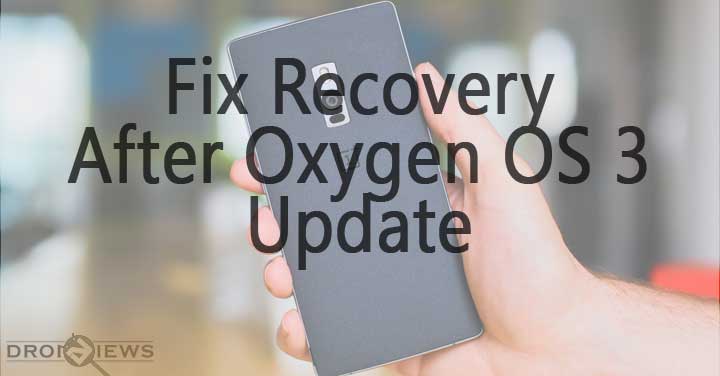
The Marshmallow based Oxygen OS 3.0 update was one of the most eagerly anticipated updates for the OnePlus line-up right alongside the launch of the OnePlus 3. What it meant for existing users was the end of a long wait to finally get a taste of Google’s latest Android flavor.
While many will complain that the update should have been pushed out months ago seeing as how the official Marshmallow launch was way back in October of 2015, getting the update now is certainly a nice welcome none the less.
OnePlus CEO Carl Pei did mention that the delay was because the development team was still ironing all the bugs, which is also why they had to launch minor OTA updates to fix some of the initially reported ones. Now one of the bugs which is mostly going unnoticed is while trying to boot into recovery.
My device, as well as a few users over on the Xda-developers forums, have reported this issue, mainly to those who flashed the update. Booting into recovery doesn’t seem to work as the device gets stuck at the ‘OnePlus Logo’ and doesn’t proceed forward. Although there is a simple fix to it, don’t apply it unless you are sure your device is facing the same problem, else you could face data loss.
Pre-requisites:
First of all, you will need to ensure a few things before we start:
- Confirm you are using an unlocked OnePlus 2
Note: Carrier models might not work with this method. The user has to perform this at their own risk.
- Ensure that you have the necessary OnePlus installed (Download here).
- Check if you have at least 80-85% of battery charge. We don’t want the phone dying in the middle of the process.
- If you have done this process before on other devices then you must be familiar with ADB and fastboot. Ensure that you have it installed.
For those who aren’t familiar with ADB and fastboot, Please refer to our detailed guide on How to Setup ADB and Fastboot on Windows within Seconds
- Enable USB-Debugging from Developer Options in the Settings menu.
- If you cannot find Developer Options, then you’ll have to first enable it by going to Settings -> About Phone -> Build Number and tap it 7 times until you see a small notification that you have enabled it.
- Then return to the Settings menu, you should find Developer Options there. Open it and enable USB Debugging.
- Make sure that you have backed up all your personal data and apps as all data might be erased!
- For Contacts, Calendar and People details use Google Accounts Sync to backup
- For Apps and App Data check out our detailed post here.
Disclaimer: The following procedure is highly risky and there are chances that you may brick your phone if not performed correctly, DroidViews cannot be held responsible if that happens. So the user should tread cautiously and at their own risk.
Downloads:
You will need to download these files and keep them on your Desktop.
- Recovery.img: Download Here
Steps:
Step 1 – Provided you have enabled ‘Developer Options’ as stated in the pre-requisites, head on over there and make sure you have selected ‘USB Debugging’ and ‘Advanced Reboot’. Now you can reboot into Fastboot or Recovery from the Power Off menu itself, but don’t reboot into recovery just yet.
Step 2 – Hold down the Power button and select Reboot>Bootloader. You phone will now boot into Fastboot mode.
Step 3 – Next, connect you OnePlus 2 to you computer in Fastboot mode, open up Command Prompt and type the following code:
fastboot devices
This shows if the device is connected to your system, If it doesn’t show up your device then you might not have installed the drivers properly
Step 4 – Now change the directory of your Command prompt to your Desktop by typing this command
cd Desktop
Step 5 – Type this command to clear the fastboot cache so we can proceed
fastboot erase cache
Step 6 – Type the following command next and press Enter
fastboot flash recovery <name of the .img file>
This will flash the recovery on your OnePlus 2 fixing the issue.
After these steps, reboot your device and try to access the recovery by holding the Power + Volume Down key and releasing the Power key once the ‘OnePlus’ logo shows up, it should boot right into recovery.
If you had any issues or if this guide didn’t help do let us know in the comment and we will surely assist you.



Join The Discussion: